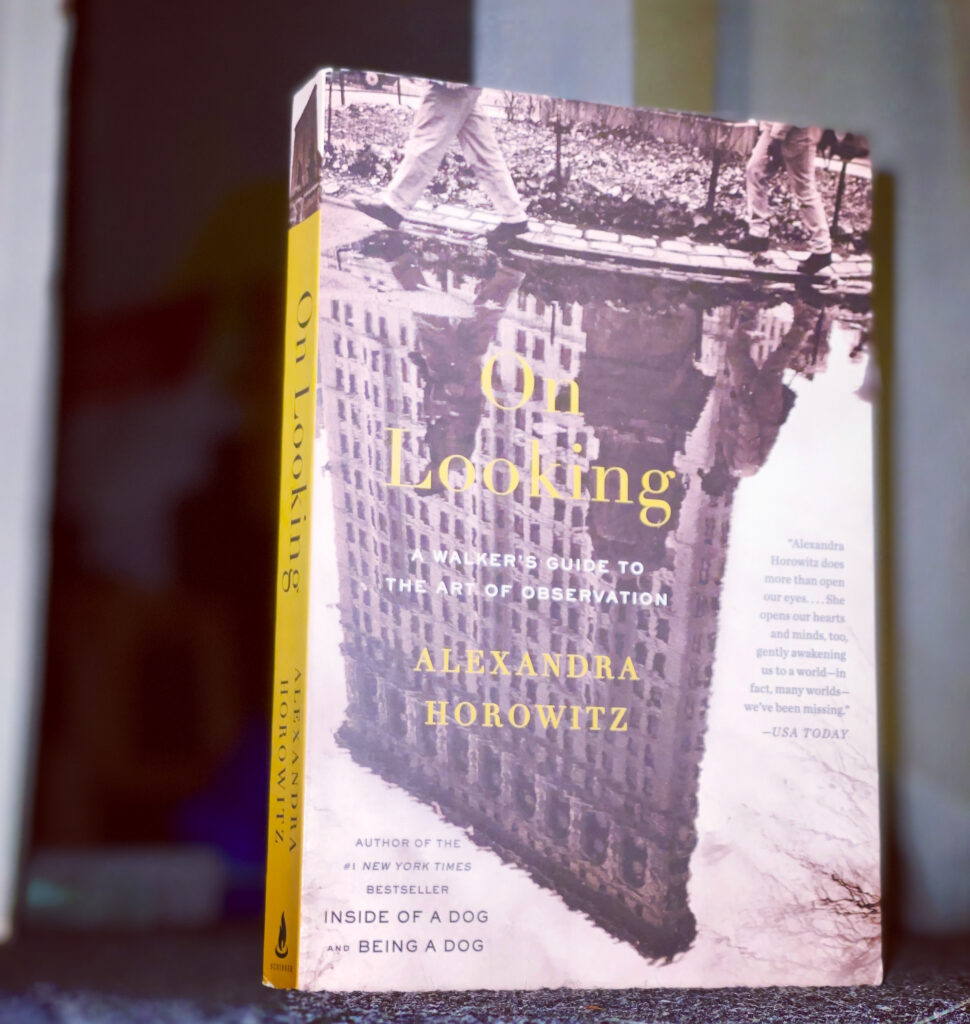
Nonfiction. Aimed at a general audience. An engagement with the ways we see the world around us. In each chapter, the author goes on a walk with someone different. Most of these someones are experts who, because of their expertise, perceive the places through which they are walking differently than most of us would, and are able to draw in different kinds of knowledge and provide different kinds of insight. Through conversation with them as they walk, Horowitz’s perception shifts, and hence ours as we read. The experts include a geologist, a physician, an illustrator, an entomologist, a typographic expert, the author’s toddler, and more. The chapters are a mix of rich, grounded description of the walks in question, and associated wanders through topics near and far related to that chapter’s theme.
Didn’t like this as much as I thought I would. Not that it’s bad. I’m definitely interested in questions of perception and had high hopes for the book’s approach, and it has bits that I thought were quite clever and well done. There was just more of it that was kind of meh than you look for in a book. Part of my ambivalence is probably related to the expectations I (inadvertently) brought to it. One of my favourite modes of scholarship to read, when it is done well, is that of close attention, whether properly ethnographic or phenomenological, or using close attention in more rhetorical and stylistic ways. Such work is often dense and difficult but carries the possibility for great insight about ourselves and the world. But this book just wasn’t that, and didn’t try to be. Perhaps in deliberate imitation of how casual walks through a city work, the material meandered, which is clever as a writing conceit but just didn’t quite work, because it often ended up feeling undirected and lacking in momentum. I suspect it was meant to create a sense of discovery and wonder, and it did at times, but not consistently enough. Plus, the book has a tendency to overexplain – to be too concerned that the reader might not know this or that, rather than pushing us to keep up – which also functioned as a bit of a drag on the reading experience. And while this didn’t actively bother me in the midst of reading, on reflection afterwards it is striking and disappointing (though of course perfectly consistent with selling a lay nonfiction book to a mainstream publisher and a mainstream audience) that the signs of social injustice and structural violence that I am sure would be readily observable on any amble through New York were never really the focus for the kind of deep dive that, say, weird old lettering and microscopic fossils were.
Anyway. Not terrible, but a bit disappointing.
Originally posted by Scott on Goodreads.